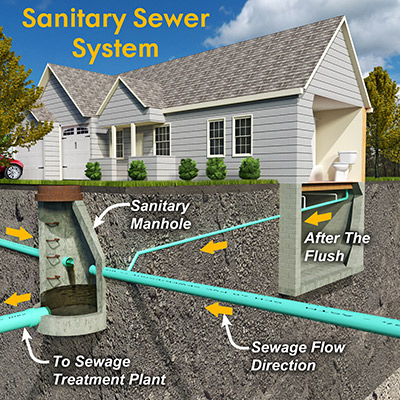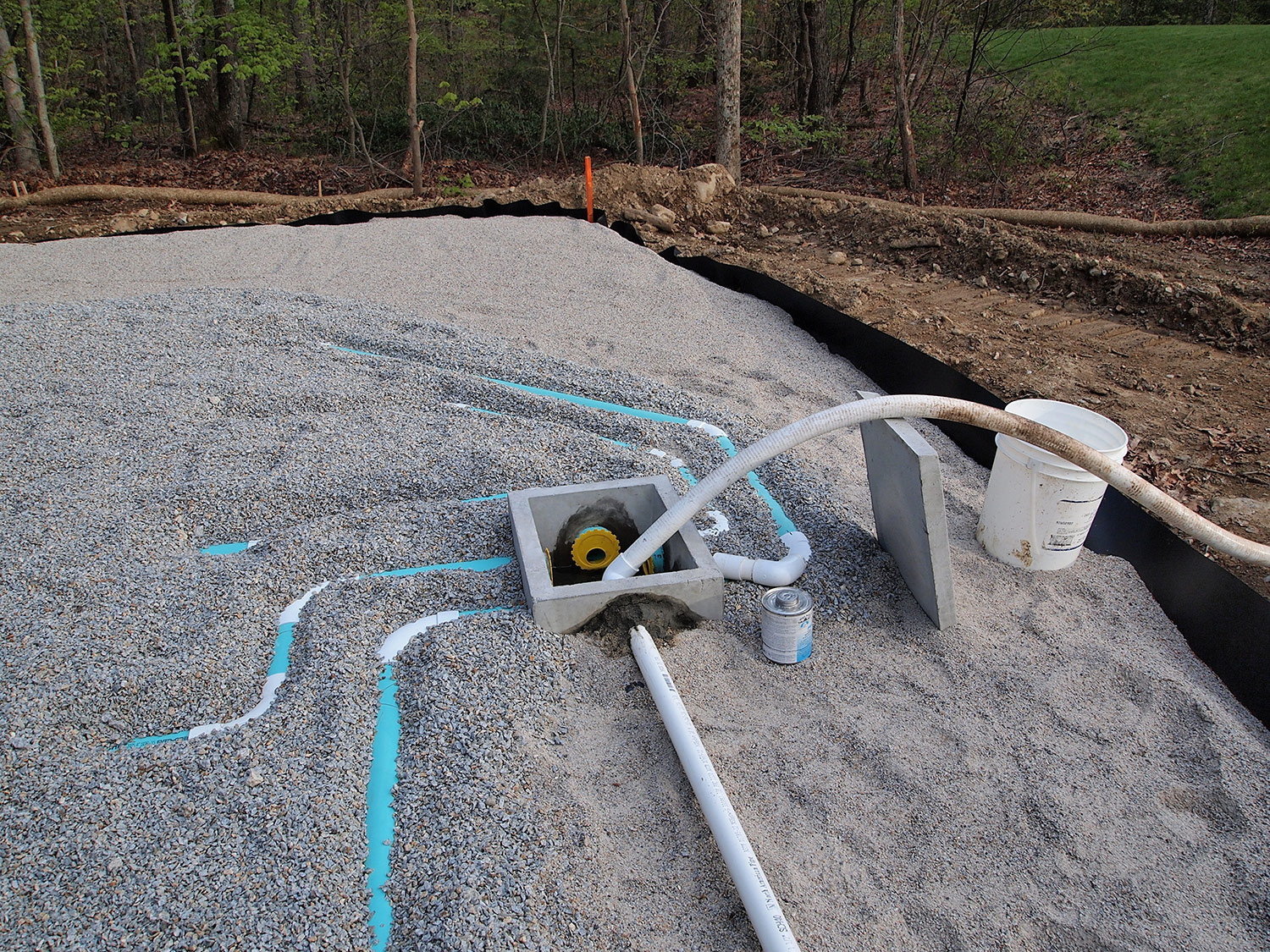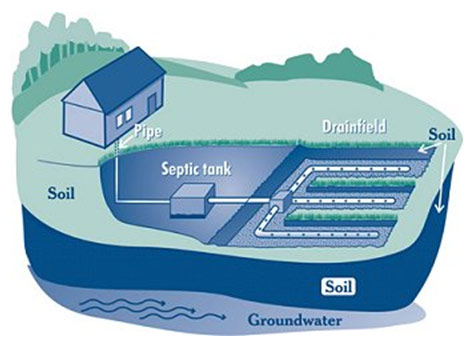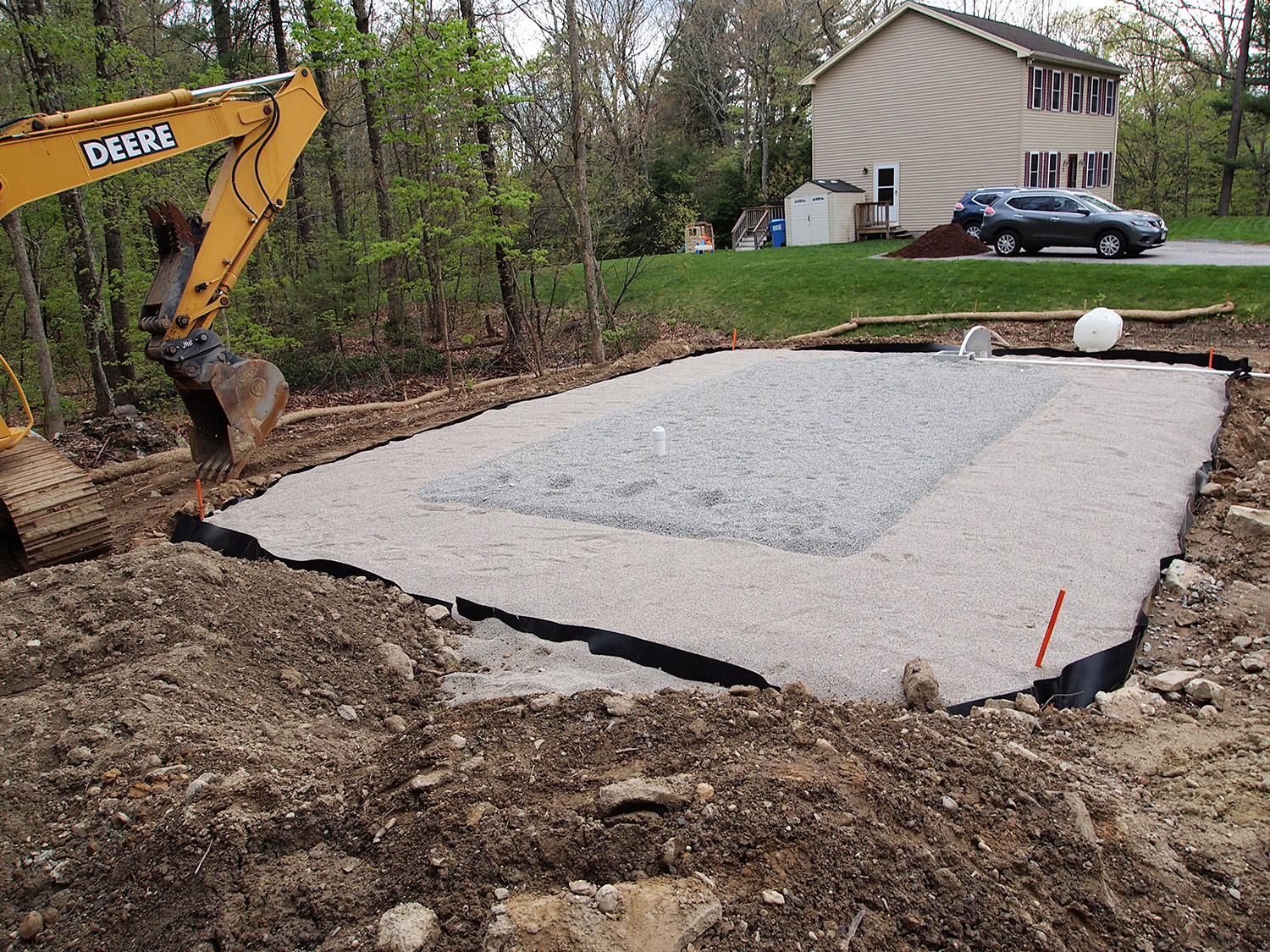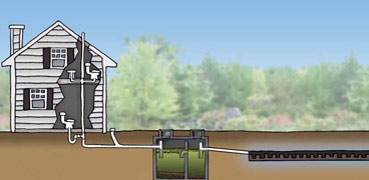
Traditional septic systems only work if the soil in the leach area is sufficiently permeable that it can readily absorb the liquid effluent flowing into it. Also, there must be at least a few feet of good soil from the bottom of the leach pipes to the rock or impervious hardpan below, or to the water table.
Less commonly, a site can fail because the soil is too permeable, allowing the effluent to reach the groundwater before it is fully treated. Very steep slopes are also unsuitable for a conventional leach field.
The specific standards vary from town to town, but any of these characteristics can prohibit the use of a standard gravity-fed septic system. In some cases, a more expensive alternative septic system may be allowed. To determine if a building site is suitable for a septic system, a percolation test (typically called a “perc test’ or “perk test”) is required.
NO PERC, NO HOUSE
On rural sites without municipal sewage systems, a failed perc test means that no house can be built – which is why you should make any offer to purchase land contingent on the site passing the soil and perc tests. As prime building sites become increasingly scarce (or prohibitively expensive) in many parts of the country, rural sites that will not pass a percolation or perc test are increasingly common.
In general, soils with high sand and gravel content drain the best and soils with a high clay content or solid rock are the worst. Most soils fall somewhere in the middle with a mix of course sand and gravel particles, small silt particles, and miniscule clay particles – the smallest.
The two main tests used to determine a site’s suitability for a septic system are a perc test and visual observation of the soil in a test pit, sometimes referred to as a deep hole test. Testing requirements vary greatly from state to state and often from town to town, as most states allow individual towns to establish separate rules within state guidelines.
Make sure you talk to your town health officer about what tests are needed, when they can be done, and who should perform them. Whether or not a licensed professional is required, it’s a good idea to hire an seasoned expert with local experience as many of these tests have a bit of wiggle room.
DEEP HOLE TEST
Most evaluations start with a deep hole test dug by machine to well below the bottom of the proposed leach field – often 7 to 10 feet deep or greater. Soil samples may be taken back to the lab, or visual observations of the soil layers may be sufficient.
Soil tests or observations are used to identify the drainage characteristics of the soil, the seasonal high water table, and the depth of the “limiting zone,” where the soil is unsuitable for treating sewage. The high water table is identified visually by looking for “mottling,” splotches or streaks of color in the soil indicating the occasional presence of water.
The limiting zone is defined by upper layer of the water table or impermeable rock or soil. If the limiting zone is too close to the surface to allow for a conventional leach field, then a mound or other alternative septic system may be required. Typically, the water table or impermeable soil must be at least 3 feet below the bottom of the trenches in the leach field.
While most soil experts believe they have enough information at this point to design an effective septic system, most states today also require perc testing to directly measure the rate at which water percolates through the soil. The test measures how fast water drains into a standard-sized hole in the ground. The results determine whether the town will allow a septic system to be installed, and system designers use the results to size the leach field.
PERC TESTING
To conduct a perc test, first talk to the local health department official as requirements can vary significantly from town to town as far as who can conduct the test, the minimum number of holes, depth of holes, required absorption rates, and when the tests can be performed. In general, tests cannot be conducted in frozen or disturbed soil, and some areas only allow tests during certain months of the year – so plan ahead.
Test results are usually good for two to five years, and in some cases can be renewed. However, with all things perc, rules vary greatly from town to town so don’t make any assumptions. Always check with the town health department before proceeding.
OTHER SITE CONDITIONS
Septic system regulations vary widely, but most municipalities require that the leach field meet specific requirements above and beyond the perc test. Some common limiting factors are:
- Steep slope. The maximum allowable slope for a conventional system typically ranges from 20% to 30%.
- Filled land. Native soils are typically required, although engineered fill may be acceptable in some cases.
- Wetlands or flood zones. Not acceptable for leach field.
- Site drainage. The leach field should not be in the path of runoff during rain storms, which could cause erosion or flooding of the system.
SETBACKS & CLEARANCES
Minimum distances are required from the septic tank and leach field to buildings, property lines, water pipes, wells, and open water. On small sites, a variance might be required to allow sufficient space. You may be required to find suitable space for both the active leach field and a replacement field, for use in 20 or 30 years when the original field is exhausted. Clearances vary from one town to another so always check with local codes
OPTIONS IF SITE FAILS
Even if your site fails a perc or deep-hole test, all is not lost. For sites with high water tables, you may be able to “de-water” the leaching area by strategically placing gravel-filled trenches and subsurface drain pipe to conduct water away from the drain field. You’ll need a highly experienced earthwork contractor, and possibly the help of a civil engineer or geotechnical engineer, to make this work.
Also, a wide range of alternative septic systems have been developed in recent years for use on almost any type of site. Find out which systems are approved for use in your area and which might be suitable for your site. In general, these systems cost more and many require pumps, alarms, and other components that require more monitoring and maintenance than a standard septic system. As these become more common and more widely accepted, formerly unbuildable lots may all of a sudden become approved building lots. As with all new building technology, however, look at products and systems with a proven track record in the field.
For more information contact Morse Engineering and Construction.
Source: buildingadvisor.com

